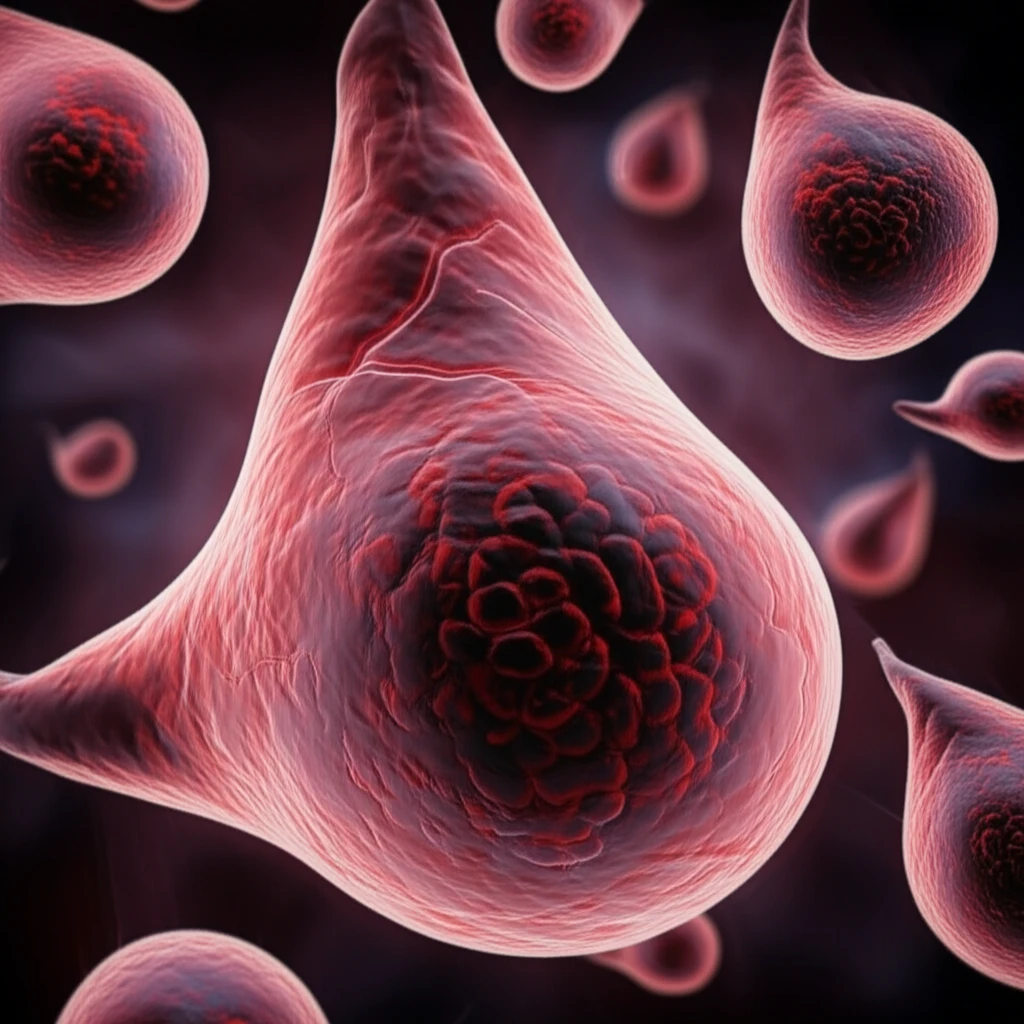
Starving Cancer: Can Energy Restriction Combat Drug Resistance?
"New research explores how mimicking energy restriction can target cancer stem cells and overcome multi-drug resistance in breast cancer."
Breast cancer remains a leading cause of cancer-related deaths among women globally. A significant challenge in breast cancer treatment is the development of drug resistance, often attributed to cancer stem cells (CSCs). These CSCs possess unique properties, including high expression of ATP-binding cassette (ABC) transporters, which enable them to effectively pump out drugs, leading to multi-drug resistance (MDR).
A promising area of research focuses on targeting CSCs to overcome drug resistance. One such approach involves energy restriction, which aims to limit the availability of energy to cancer cells, thereby disrupting their survival and drug resistance mechanisms. Energy restriction mimetic agents (ERMAs) offer a way to mimic the effects of energy restriction without requiring drastic dietary changes.
This article delves into a study investigating the potential of ERMAs, specifically OSU-CG5, to counteract multi-drug resistance in breast cancer CSCs. The research also explores the synergistic effects of combining OSU-CG5 with conventional chemotherapy agents like doxorubicin, offering a potential strategy to improve treatment outcomes.
How Energy Restriction Targets Drug-Resistant Breast Cancer Stem Cells

The study, conducted by researchers at the University of Sharjah, United Arab Emirates, investigated the effects of energy restriction mimetic agents (ERMAs) on doxorubicin-resistant breast cancer cells. Doxorubicin-resistant MCF-7 and MDA-231 cell lines were generated by exposing the cells to increasing concentrations of doxorubicin, a common chemotherapy drug.
- MTT cell viability assay: This assay measures the metabolic activity of cells, indicating their viability and response to treatment.
- Immunofluorescence: This technique uses fluorescently labeled antibodies to visualize specific proteins within cells, allowing researchers to assess the expression of drug resistance markers.
- Western blot: This technique separates proteins based on their size and electrical charge, enabling researchers to determine the expression levels of ABC transporter proteins, which contribute to drug resistance.
- Flow cytometry: This technique allows for the identification and quantification of specific cell populations based on their surface markers, enabling researchers to assess the presence of breast CSC markers CD44 and CD24.
The Future of Breast Cancer Treatment: Targeting CSCs with Energy Restriction
The study's findings suggest that targeting breast CSCs with ERMAs could be a promising strategy to minimize multi-drug resistance. Combining ERMAs with conventional chemotherapeutic agents like doxorubicin may offer a clinically relevant approach to improve cancer treatment outcomes.
By limiting the availability of energy to cancer stem cells, ERMAs can disrupt their survival mechanisms and reduce their ability to resist drug treatment. This approach holds the potential to overcome a major obstacle in breast cancer therapy and improve patient survival rates.
Further research is needed to fully elucidate the mechanisms of action of ERMAs and to optimize their use in combination with other cancer therapies. However, these findings represent a significant step forward in the development of new and effective treatments for drug-resistant breast cancer.
